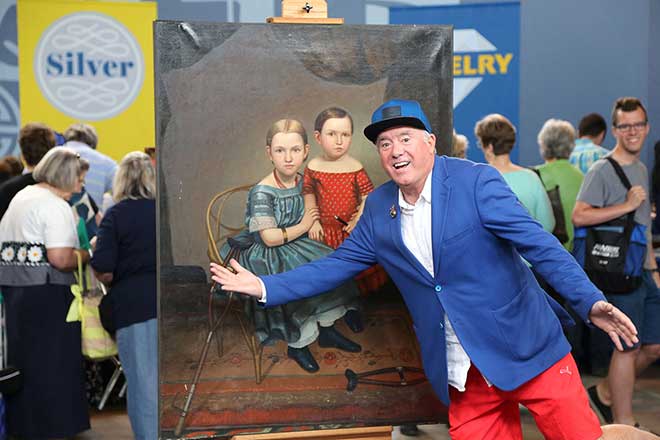It’s not every day you see people wheeling mahogany chests and bronze statues down Washington Avenue, but then it’s not every day that Antiques Roadshow comes to St. Louis. In fact, it’s been 17 years since the last time!
Lucky for us, our city is one of just six on the 2017 Summer Tour, which will air on PBS sometime in 2018. So what’s it like to be part of this unique cultural happening (which started, by the way, in England)? With 5,000 people milling around Exhibit Halls 4 and 5 of America’s Center, you might expect it to be a mob scene, but it was entirely orderly. I guess these folks were just glad to be chosen from among 16,000-plus applicants!
Attendees are
If they are among the very lucky few to be filmed (about 125 are recorded, of which about 30 actually air on TV), they will spend a nerve-wracking half-hour under the glare of lights— and everyone within sight—as their appraiser interviews them on-camera and reveals the actual value of their item. That is the first time they will learn that all-important bit of information.
How are these special folks chosen? That is totally at the discretion of the appraiser. These experts, approximately 70 of them in 24 specialties from militaria to tribal arts, come from all over the country to offer their services. Everything about the Roadshow is free for participants: entrance, appraisals, taping. Appraisers don’t get paid; they come at their own expense, ostensibly for the chance to find that one-of-a-kind treasure—and for the national exposure it gives their businesses.
Alas, my item was not exceptional enough to be flagged for a taping. I did find out, however, that my Ballets Russe de Monte Carlo magazines were ‘very well preserved’ and would fetch about $600 ‘in the marketplace’—whatever that is. I don’t know anyone who’d want to purchase magazines from the 1940s, even if I wanted to sell them.
Upon closer inspection of the magazines, I noticed that the costumes for one ballet—arrayed over two pages—were designed by none other than Marc Chagall. The ballet’s board listed Mary Pickford, Edsel Ford and Helena Rubinstein, plus various Astors and Vanderbilts. And the choreographer list includes Agnes de Mille and a young George Balanchine. That’s when I knew that, Antiques Roadshow or not, holding a piece of history in your hands is priceless.
